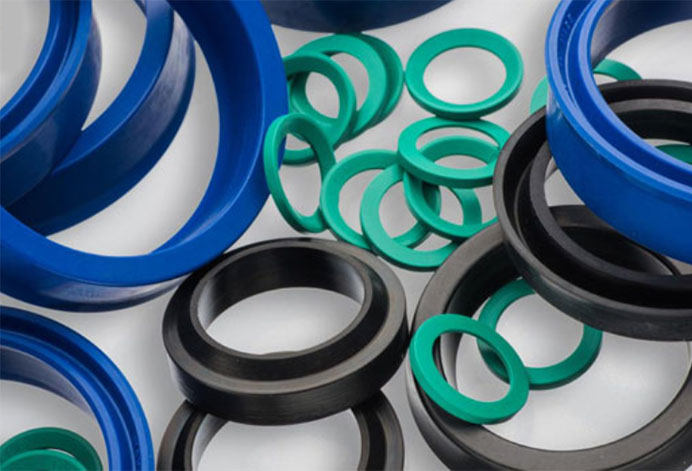The following are the physical properties of rubber:
· Specific gravity
· Abrasion resistance
· Tear resistance
· Compression set
· Resilience
· Elongation
· Tensile modulus
· Tensile strength
· Hardness
Hardness
The chemical structure of the elastomers provides them with an inherent hardness that can be altered. The modified hardness is then measured in terms of of durometer (duro) on a Shore scale. Shore A is used for a soft to medium-hard rubber. Solid rubber, with a consistency of pencil erasers, has a hardness of 40 duro. By contrast, harder rubber, like that used in hockey pucks, has 90 duro hardness.
Tensile Strength
Tensile strength is the amount of force needed to tear apart a rubber specimen until it breaks. It is also known as ultimate tensile strength, and is measured in terms of megapascals or pounds per square inch (psi) according to ASTM D412. The tensile strength is a key factor for designers and buyers as it signifies the point of failure resulting from the stretching of rubber.
Tensile Modulus
Tensile modulus is the stress or force required for producing a strain or an elongation percentage in a rubber sample. Although it sounds similar to tensile strength, the properties are different. Harder rubber usually has a higher tensile modulus, making it more resilient. It is also more resistant to extrusion, which is a process for manufacturing stock materials used in custom fabrication.
Elongation
Elongation is defined as the percentage increase, or strain, in the original length of a rubber sample with the application of a tensile force, or stress. Certain elastomers tend to stretch more compared to others. Natural rubber, for instance, can stretch up to 700% prior to reaching its ultimate elongation, which causes it to break. However, fluoroelastomers can only withstand 300% elongation.
Resilience
Resilience, also known as rebound, is the ability of rubber to return to its original size and shape following a temporary deformation, such as contact with a metal surface. Resilience is critical in dynamic seals that serve as a barrier between stationary and moving surfaces. It is necessary to take into account resilience for applications that require weatherstripping between a door frame and a door.
Compression Set
Compression set is the extent to which an elastomer fails to return to its original thickness upon releasing a compressive load. Repeated compression of a rubber seal over time results in progressive stress relaxation. Compression set is the end result of a continuous decline in sealing force.
Tear Resistance
Tear resistance is the resistance of an elastomer to the development of a cut or nick when tension is applied. This property, also called tear strength, is measured in kilonewtons per meter (kN/m) or pound force per inch (lbf/in). It has to be considered when selecting a compound for edge trim that will be in contact with sharp objects or rough metal edges.
Abrasion Resistance
Abrasion resistance is the resistance of rubber to abrasion by scraping or rubbing. Abrasion-resistant rubber is used in industrial applications including conveyor belts that move coal, and pumps that handle slurries.
Specific Gravity
Specific gravity is the ratio of a material’s weight to the weight of an equal volume of water at a particular temperature. This property enables the chemists to identify compounds. It is important for part designers and technical buyers to be aware that rubber with a low specific gravity provides more square inches per pound of stock. By contrast, those with a higher specific gravity have advantages in molding consistency.
Post time: Oct-22-2020

